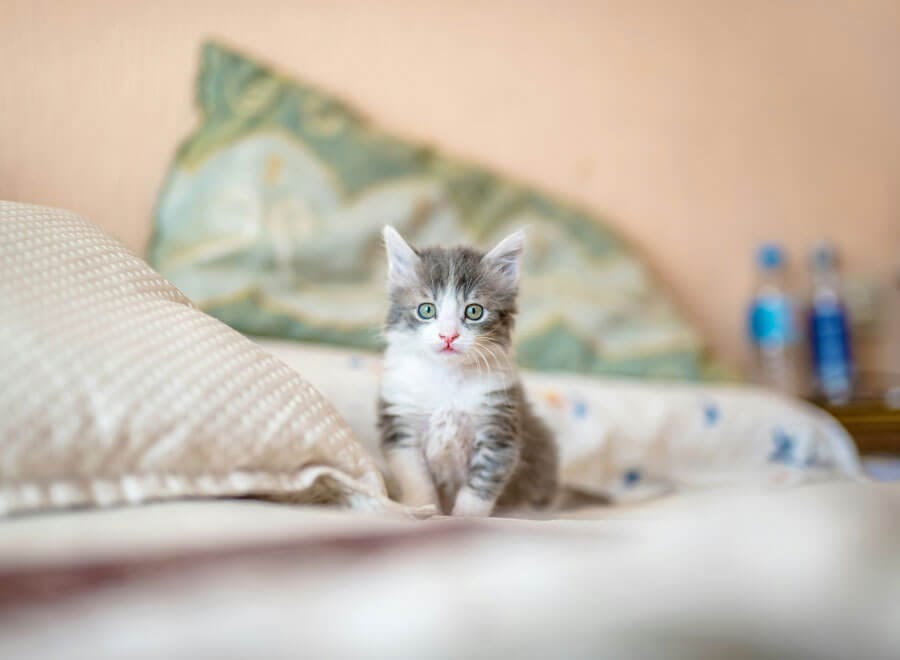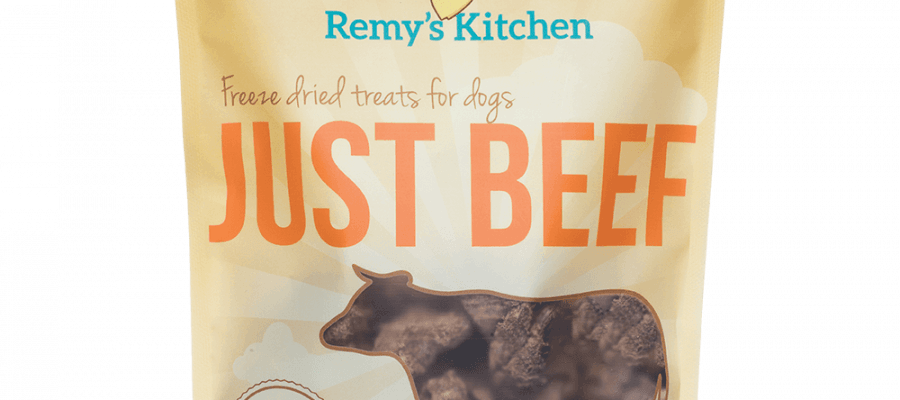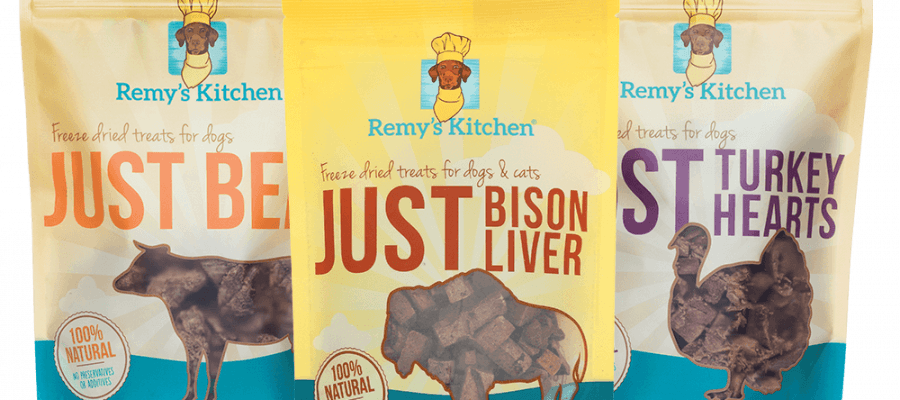
Your cat’s got opinions. Lots of them. Especially about food. One day they’re all about tuna, the next they’re acting like it’s poison. Sound familiar?
That’s why more pet parents are leaning into home made cat treats—snacks you can control, ingredients you can pronounce, and flavor your cat won’t turn their nose up at.
But let’s pause. Not everything “DIY” is healthy, and not every viral cat treat recipe is feline-friendly. So today, we’re answering the big question: what treats are good for cats, how do you make them at home, and why real, clean ingredients always win—whether you’re mixing from scratch or grabbing freeze-dried options from places like Remy’s Kitchen.
Let’s get cooking (without the mystery ingredients).
Because here’s the thing—cats aren’t little dogs. Their systems are more delicate, their nutritional needs more specific, and their tastes wildly unpredictable. One wrong binder, one unnecessary carb, and boom—indigestion, allergies, or flat-out rejection.
That’s where simple wins. Whether it’s Remy’s Kitchen with prepped freeze-dried organ meats or an at-home blend of tuna, pumpkin, and egg, the best treats are always the ones that make sense biologically. Think: fewer ingredients, less heat, more purpose. You’re not just making snacks. You’re making trust, one real bite at a time.
Why Go Homemade in the First Place?
Tired of flipping over labels and finding wheat, corn, “natural flavors,” and stuff that doesn’t even sound like food? You’re not alone.
A lot of commercial cat treats are basically glorified cereal. And guess what? Cats are obligate carnivores. That means they need meat—organ meat, clean fat, amino acids—not grainy filler with a cute fish on the label.
Many brands slap on claims like “healthy” or “natural” while packing their products with glycerin, mystery binders, preservatives, and artificial flavors to make them shelf-stable. But here’s the thing: shelf-stable doesn’t always mean cat-stable. These unnecessary additives can lead to bloating, allergic reactions, and even long-term digestive issues.
Making home made cat treats gives you full control. No sugar, no dyes, no synthetic flavors. Just real, species-appropriate snacks that make your cat feel great.
You choose the ingredients. You know exactly what’s going into that treat—no guessing, no Googling every label. Want to keep it super simple? Freeze-dried heart or liver. Want to get fancy? A blend of sardine, egg, and pumpkin. Either way, you know your cat’s getting food their body actually recognizes.
And let’s not forget about portion control. With homemade treats, you can make them small enough for training or large enough for a satisfying snack—without overdoing calories or upsetting sensitive stomachs.
Plus, there’s the emotional payoff. Watching your cat devour something you made? That’s a whole different level of satisfaction. You’re not just feeding. You’re nurturing.
So whether you’re blending up your own batch of goodies or mixing real ingredients from Remy’s Kitchen into a soft, kitten-approved freeze, going homemade is about more than treats. It’s about trust. And your cat can feel the difference in every bite.
What Treats Are Good for Cats?
Here’s what to look for when choosing or crafting a superfood healthy snack for cats:
High-protein: Think turkey heart, chicken liver, beef muscle, or whitefish. These are the building blocks of feline health—supporting muscle tone, energy levels, and coat health. Organ meats in particular are packed with taurine, which is non-negotiable for cats.
Low carb: Cats don’t process carbs like dogs or humans. Avoid rice, wheat, oats, or sweet potato “bases.” They may bulk up the treat, but they don’t serve your cat’s biology.
Minimal ingredients: The fewer, the better. One ingredient? Even better. Cats do best on simplicity—less risk of allergies, fewer digestive issues, more predictable reactions.
Freeze-dried or gently cooked: High-heat baking kills off a ton of natural vitamins and enzymes. Freeze-dried snacks preserve everything good, in a raw-inspired form your cat’s body understands.
Want a shortcut? Single-ingredient treats like those from Remy’s Kitchen offer all of the above. No prep required. Just open, serve, and let your cat do that weird “happy loaf” thing on the rug.
Pro tip? These treats are kitten-safe too. Soft, nutritious, and instinctively delicious, they make training, enrichment, and bonding feel effortless—while actually supporting their growth from the inside out. Clean treats = confident cats.
Home Made Cat Treats: Starter Recipe Ideas
Not a pro chef? Doesn’t matter. These beginner-friendly ideas are tasty, safe, and feline-approved.
1. Chicken Liver Nuggets
- 1 cup chicken liver
- 1 egg
- 1 tbsp coconut flour
Blend, form tiny patties, and bake at low heat until firm. Cool before serving.
2. Tuna Pops
- 1 can tuna in water (no salt)
- 1 tbsp plain pumpkin purée
- Optional: pinch of catnip
Freeze in silicone trays for summer treats or teething relief.
3. Remy’s Remix
- Crumble freeze-dried organ treats from Remy’s Kitchen
- Mix with goat milk or broth
- Freeze into bite-sized bombs
Yes, this one’s not fully homemade—but it’s Remy’s Kitchen at its easiest.
What About Cats With Sensitive Stomachs?
Great question. Sensitive cats need extra care—but that doesn’t mean boring food or skipping treats altogether. In fact, the right kind of treat can actually help regulate digestion and improve overall gut health.
Here’s what to look for:
Single-protein treats – These reduce the risk of triggering food sensitivities. Think pure chicken heart, turkey liver, or whitefish—no blends, no “flavor mixes,” just one clean source of animal protein.
No dairy, soy, or additives – These are common culprits for upset stomachs and should be avoided, especially if your cat is already dealing with bloating, irregular stools, or frequent vomiting.
Organ meats over muscle – Organs like heart and liver are easier for cats to digest, more nutritionally dense, and rich in taurine, iron, and B vitamins. They’re nature’s multivitamin—especially when freeze-dried instead of cooked to oblivion.
If you’re not up for cooking or measuring grams of this and ounces of that, this is where Remy’s Kitchen saves the day. Their freeze-dried snacks are gentle, clean, and biologically spot-on. No fluff. No filler. Just straightforward nutrition that your cat’s sensitive stomach can actually handle—without sacrificing taste or triggering flare-ups.
It’s not just safe—it’s smart snacking.
Are Dog Treats Safe for Cats?
Sometimes—but not always. Many dog treats include ingredients cats don’t need (or can’t digest), like sweet potatoes, peas, or added vitamins in dog-specific ratios.
However, treats like turkey hearts, beef liver, or chicken gizzards can work beautifully for both. Just check the size and ingredients—no mixer-style mystery blends.
Bonus: when treats are species-appropriate, your dog and cat can finally share. That’s less waste, more happy pets, and a much smarter pantry.
Ingredients to Avoid in Cat Treats
Let’s name names. Avoid these if you want your cat to thrive:
- Wheat, corn, soy
- Artificial colors or flavors
- Glycerin and sugar
- Meat by-products (vague, low quality)
- Baked to oblivion “crunchy” bites with zero actual meat
Bottom line? If you don’t recognize it, your cat’s body won’t either.
What About Kittens?
Superfood Healthy snacks for cats apply to kittens, too—just in smaller portions. Kittens need high fat, high protein, and soft texture.
Try:
- Rehydrated freeze-dried turkey heart from Remy’s Kitchen
- Mashed liver bites mixed with bone broth
- Frozen treat trays for teething comfort
Skip anything spicy, salty, or sweet. And remember: what’s cute on Instagram isn’t always safe IRL.
Treat Time Meets Enrichment Time
Serving treats can do more than fill a belly. Use home made cat treats for:
- Training and recall
- Puzzle feeders
- Interactive toys
- Post-grooming rewards
- Vet visit recovery snacks
Turn “treat time” into bonding time, brain time, or calm-down time. The trick? Use food that actually matters. That’s why freeze-dried organ treats are so versatile—they don’t just taste good, they do good.
Remy’s Kitchen= Your DIY Wingman
Let’s be honest—you don’t always have time to play chef. And Remy’s Kitchen doesn’t mean you have to be elbow-deep in raw organ meat every afternoon (unless you’re into that). That’s where Remy’s Kitchen steps in as your low-effort, high-reward wingman. With clean, freeze-dried organ snacks, you can still give your cat or dog a nutrient-packed, species-appropriate treat—without turning your kitchen into a science lab.
Crush a few pieces over wet food. Rehydrate with goat milk or bone broth for a soft, slurpable texture. Mix into homemade baked bites when you’re feeling fancy. Or—and this one’s underrated—just open the bag and hand it over. No prep. No mess. Just real food your pet actually wants.
It’s home-cooked in spirit with none of the burnout. You stay in control of the quality, and your pet gets the good stuff—every single time.
Final Scoop: If You Can’t Pronounce It, Don’t Feed It
So, what treats are good for cats?
The kind made with real meat. Minimal ingredients. No fluff. Whether you go full chef or remix what’s in Remy’s Kitchen, the key is feeding with intention—not convenience.
Because treats shouldn’t just entertain—they should nourish. Build trust. Make your cat feel seen, satisfied, and supported.
So go ahead. Try a batch of home made cat treats. Crumble some freeze-dried goodness. Flip the script on “snack time.”
Because when food’s real? Pets know.




